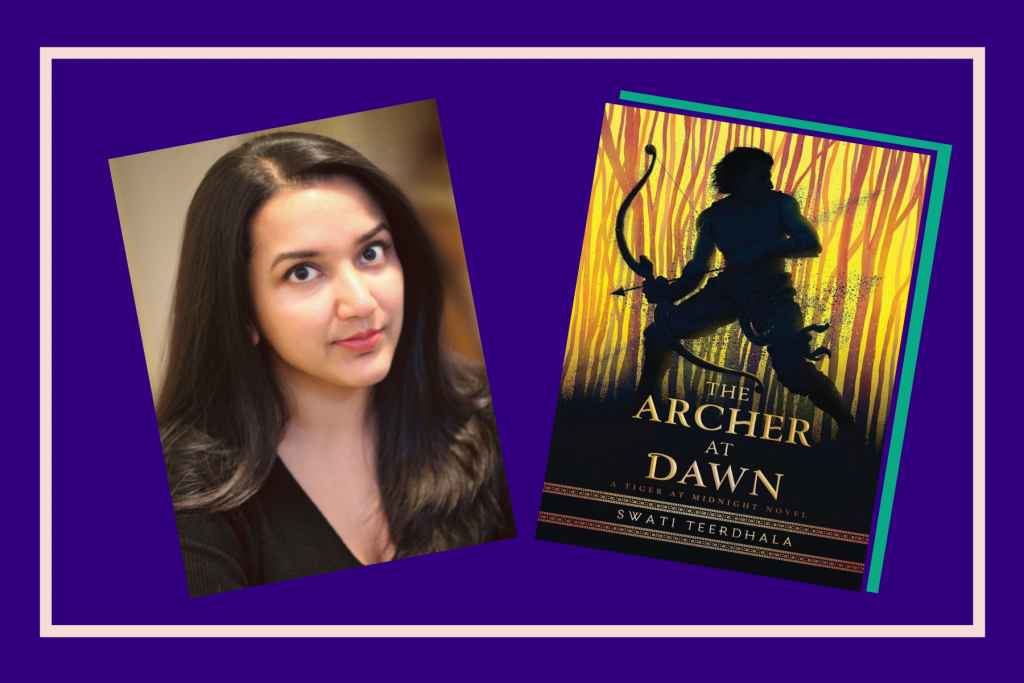
“The Archer at Dawn” by Swati Teerdhala is the second book of the widely popular Tiger At Midnight trilogy, a high fantasy series inspired by ancient India. This ultra-cool revenge fantasy novel, written by an equally cool Indian-American woman, is packed full of secret alliances, court politics, medieval fight scenes, and a compelling love triangle. Featuring a charismatic and motley crew of “diverse” hitmen, “The Archer at Dawn” carries an intricate plot ripe with political tension.
Read Related: [‘The Tiger at Midnight’: Swati Teerdhala’s New Novel Brings South Asian Mythology to Life]
The story takes place in the lands of Dharka and Jansa, two lands bonded together by magic passed down from the twin gods Narian and Naria. This second installment continues the stories of Kunal, a devoted soldier, and Esha, an assassin and rebel spy, as they embark on a heist to rescue the missing princess Reha, and reinstall her as the rightful ruler of Gwali. As Kunal and Esha pursue their mission to reclaim their country, they must also resist temptations of their budding romance. Esha must also navigate her new feelings for Kunal, and her old feelings for Harun, the (understandably) frustrated and charming Dharkan prince.
View this post on Instagram
Throughout “The Archer at Dawn,” the protagonists revisit their sorrows and learn how to reconcile the scars of their pasts. For example, Esha wrestles between her thirst for revenge on the people who killed her parents, and the safety of the Blades, her rebel organization. As she sets out to kill the culpable general, we see Kunal, the general’s nephew, struggle with his own sense of loyalty and duty as he switches allegiances and joins the Blades’ mission as an undercover soldier. We also see Kunal attempt to understand his newly-discovered royal ancestry and master the magical powers that accompany it. As the story progresses, we see how Teerdhala does a wonderful job of creating resonant character development for both Kunal and Esha.
The bulk of the story’s action comes from the competition that Kunal must enter to camouflage the rebels’ sting operation. Simultaneously, Esha and Harun must handle political tensions between the Dharkan royalty and Jansa associates, while negotiating with their former enemies. The excitement and suspense of “The Archer at Dawn” come from the dangerous close calls during the warrior tournament, as well as the shuffle game of secret alliances and cloaked intentions.
View this post on Instagram
In all, readers will enjoy the Tiger at Midnight series whether you are a seasoned fantasy reader or a newbie eager to explore. If you crave Indian-inspired stories or yearn for unconventional South Asian protagonists, this is the book for you. Teerdhala’s ability to control pacing is exceptional, and her fantastic world-building coupled with her page-turning tension (most notably at the end) will keep you captivated. The “rebel squad” characters are lovable and will charm you with their spunk and banter. “The Archer at Dawn” is a welcome addition to the growing canon of Indian-American-produced fiction, and its infusion of familiar cultural themes will surely resonate with many readers across the desi diaspora.
Keep up with the author on Instagram. Buy the book here.




